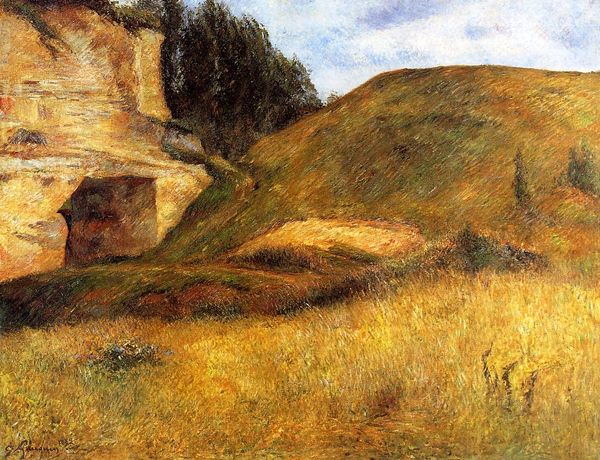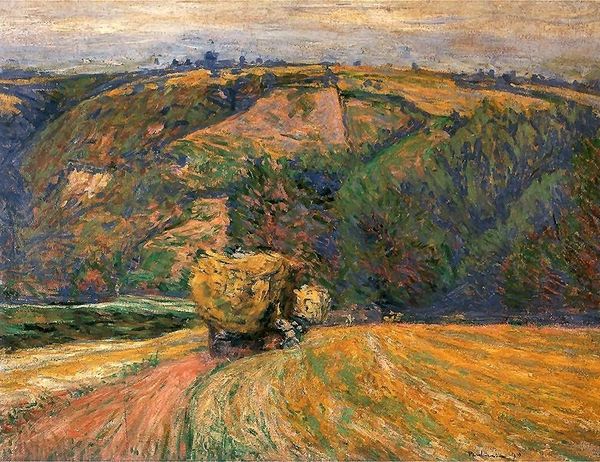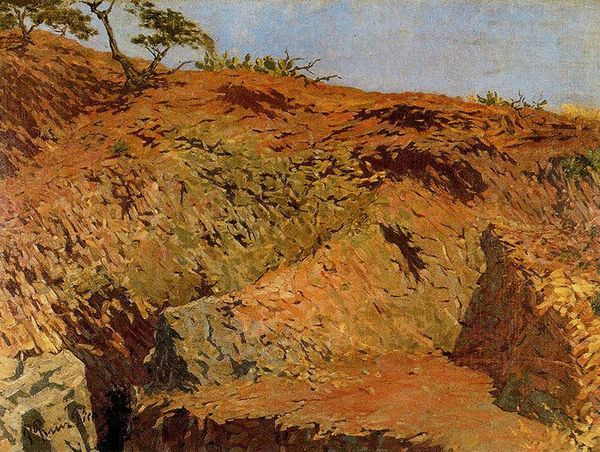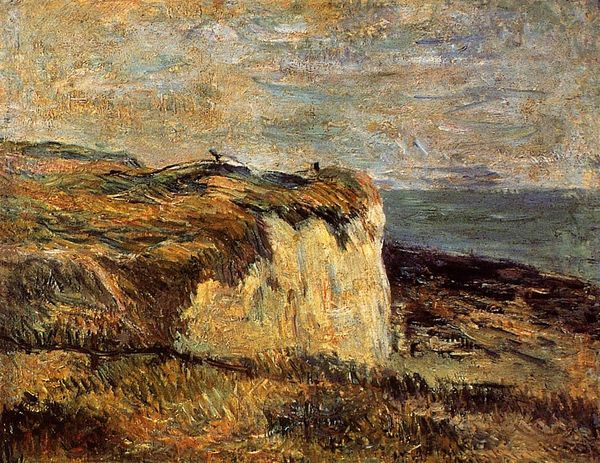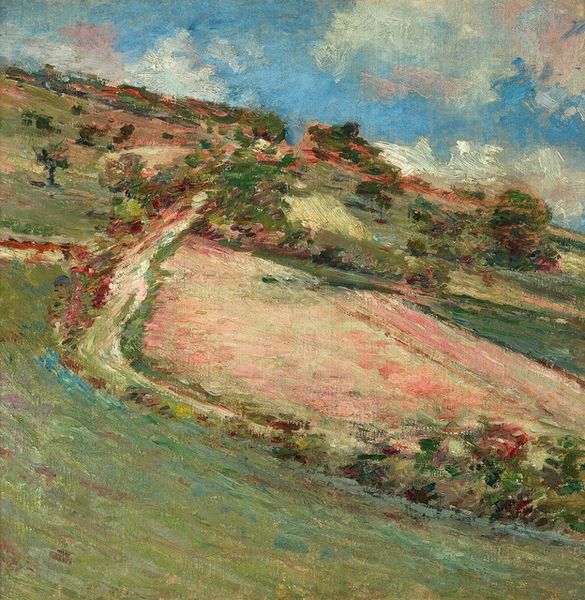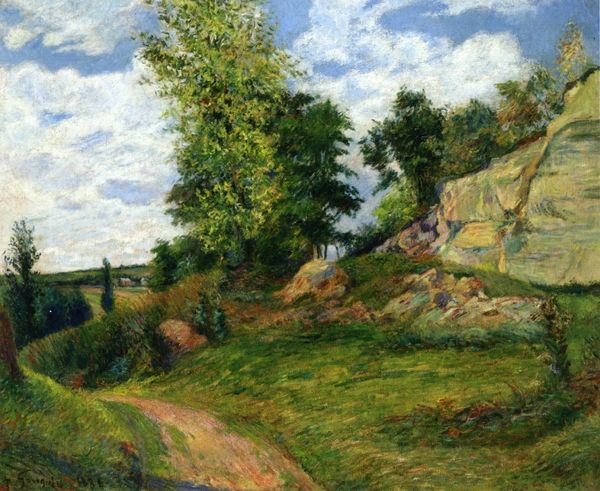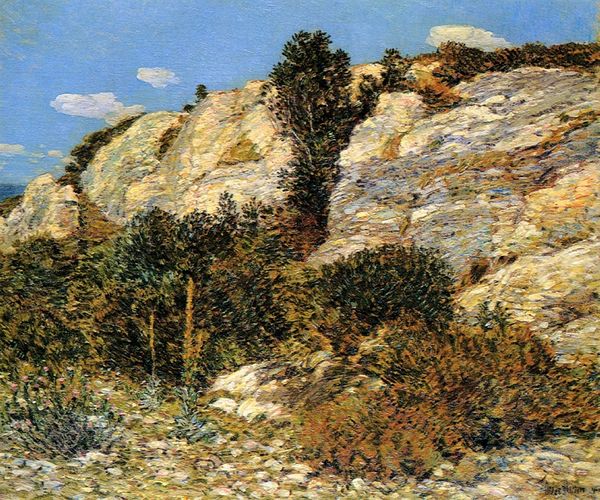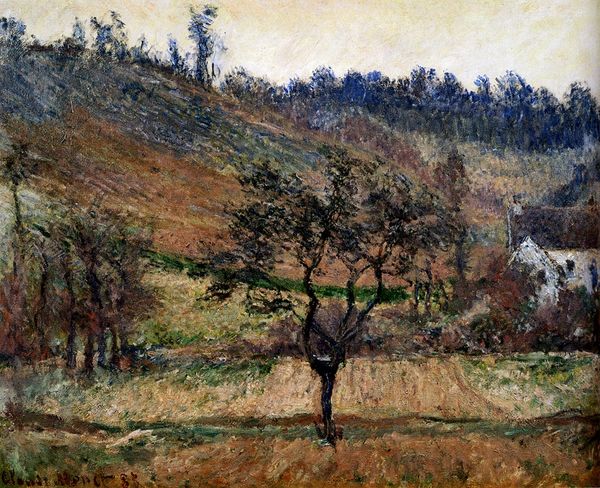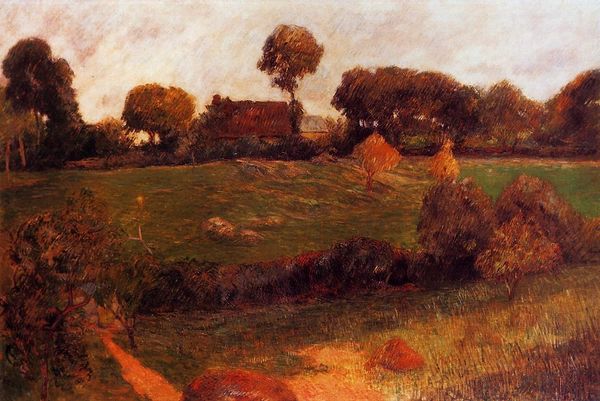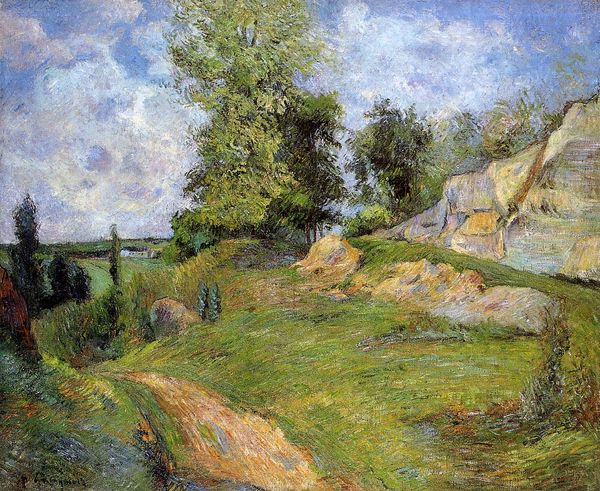
Copyright: Public domain
Curator: This is Childe Hassam's "Bornero Hill, Old Lyme, Connecticut," painted in 1904. A prime example of American Impressionism. Editor: Wow, all that gold light makes the whole scene look like it's vibrating. It almost burns my eyes to stare at it too long, like looking into the sun through squinted lids. Curator: Hassam was a leading figure in the Impressionist movement in the United States. His time spent in Old Lyme reflects a broader artistic trend of urban artists seeking refuge and inspiration in rural landscapes. He painted this en plein air. Editor: I can practically smell the hay and feel the scratchy wool of a farmhand's coat. The way he renders the hill with those broken brushstrokes gives it a real tactile quality, you know? As if you could reach out and feel the warmth radiating off the land. Curator: Absolutely. Hassam was fascinated by light and atmosphere and wanted to translate his sensations to the canvas. There was an aesthetic yearning amongst Hassam's contemporaries in the Arts and Crafts movement for an imagined pre-industrial moment, a supposed earlier harmony, but these rural communities were undergoing dramatic social and political changes themselves. Editor: It's interesting to think about that "imagined" harmony. I think sometimes we create an idea of the past that doesn’t quite represent what was actually going on. Though, perhaps that’s exactly what makes the piece compelling – the light and the composition evoke this feeling of nostalgia that is undeniably powerful. The haze on the hill – dreamy! Curator: Precisely. Paintings like "Bornero Hill" tap into this nostalgic impulse and contributed to shaping American perceptions of its own pastoral past. Editor: This is much more than just a pretty picture; it speaks volumes about what we yearn for, and how artists help shape that collective memory. So the sun really IS setting on something in this painting! Curator: Well said. It is important for our audience to think critically about idealized or romanticized imagery such as this painting, not only for what is represented, but also for what is not.
Comments
No comments
Be the first to comment and join the conversation on the ultimate creative platform.
